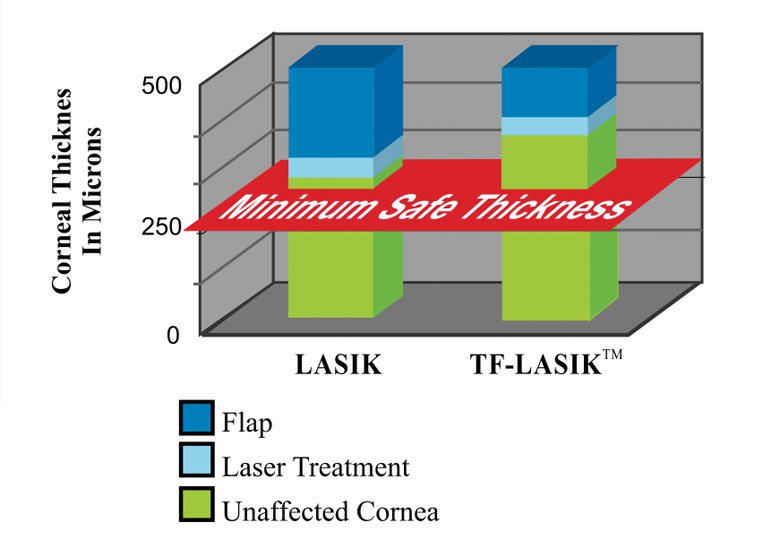Posted by: Manhattan LASIK Center

IntraLASIK is a method of Laser Vision Correction that employs an infrared beam of light to create an ultra-thin flap (much thinner than the flap created during traditional blade-based LASIK) via a process called photodisruption. This process uses highly focused, ultra-short duration laser pulses to divide material at the molecular level without impacting the surrounding tissue. The beam of laser is focused at a distinct point, creating a microscopic bubble of carbon dioxide and water vapor. Thousands of these bubbles are precisely positioned to define the flap’s dimensions, and thickness parameters. The surgeon then lifts the flap to allow the laser treatment. When treatment is completed, the flap is accurately repositioned assisted by its beveled edge.
Surgeons agree that LASIK flaps created with femtosecond lasers have intraoperative and postoperative advantages over flaps created with microkeratomes.
“The latest state-of-the-art technology, iFS-150kHz iFS Intralase offers us the most in LASIK safety, precision and versatility during flap creation”, comments LASIK surgeon, Dr. Niksarli.
In addition to leaving a thicker, stronger stromal bed on the cornea, thin flaps also diminish the risk of post-LASIK dry eye by causing less interruption of the corneal nerves. As a result, over the last several years, there has been a shift toward thinner and thinner flaps. Surgeons at MLC routinely make flaps of 90 to 100 microns thickness, and a new name has even been given to this procedure: Thin-Flap INTRALASIK, or SBK. Dr Niksarli, medical director at MLC explains that “a thin flap combines the advantages of LASIK and PRK without the disadvantages: Preserving the flap results in faster visual recovery, less discomfort, and minimal risk of haze, and the thinness of the flap preserves the biomechanical properties of the cornea, minimizing induced post-op dryness.


